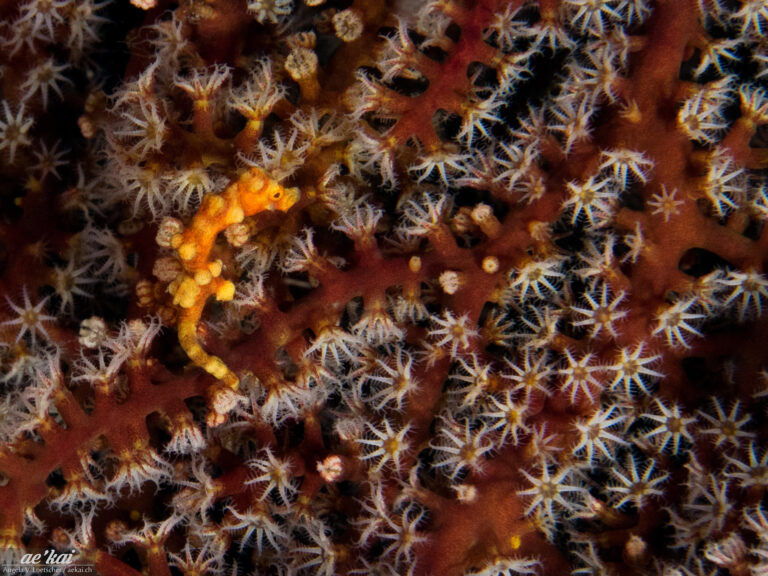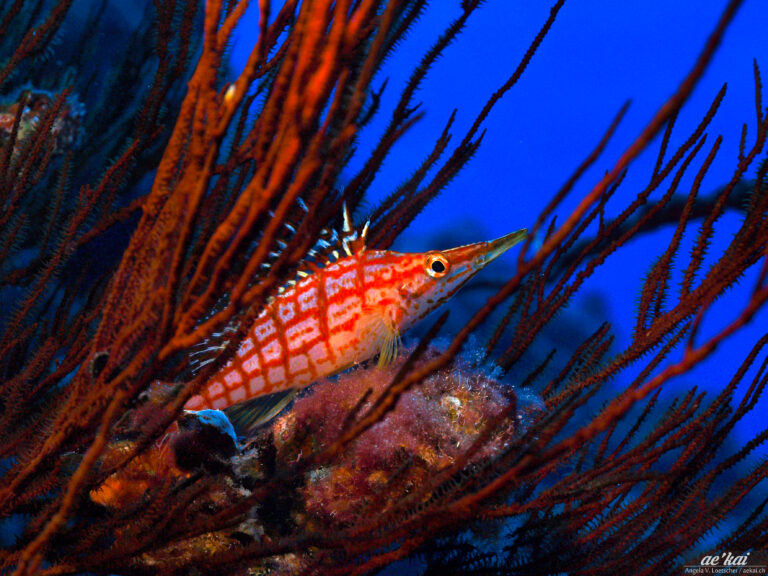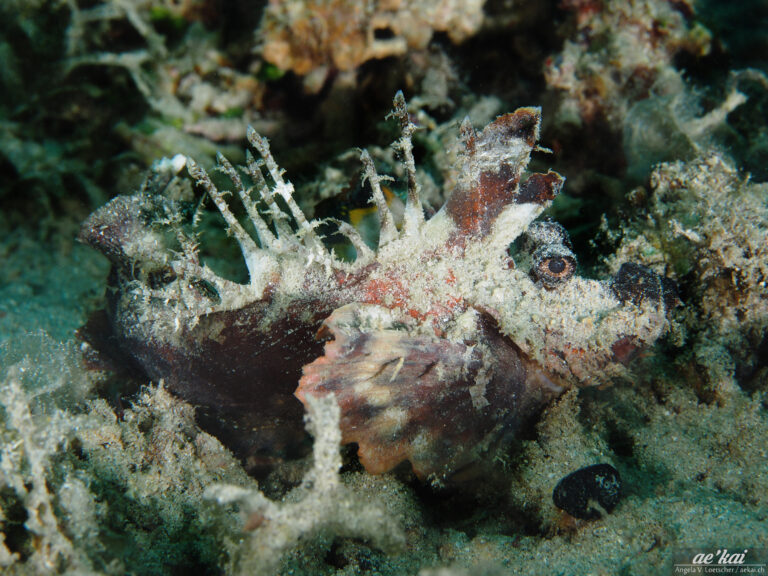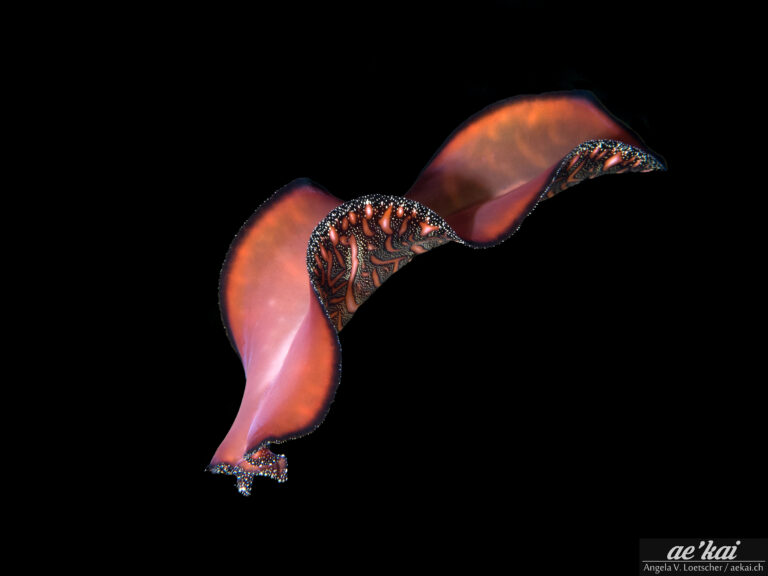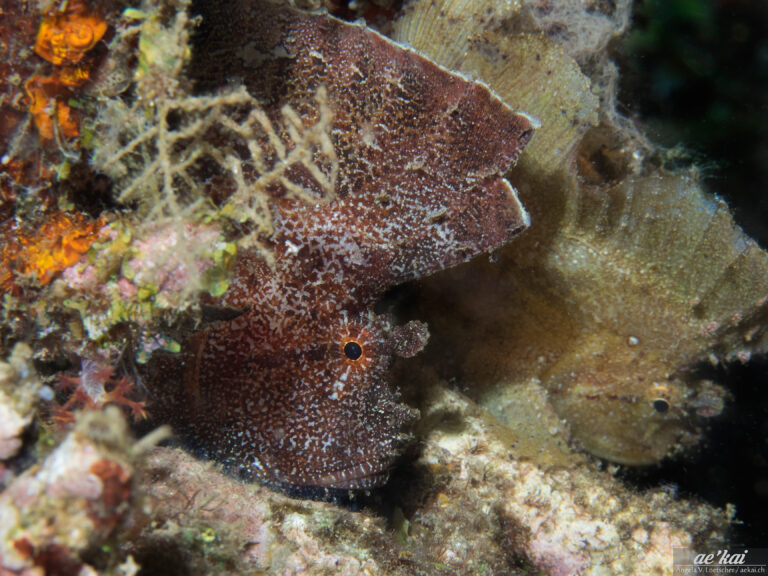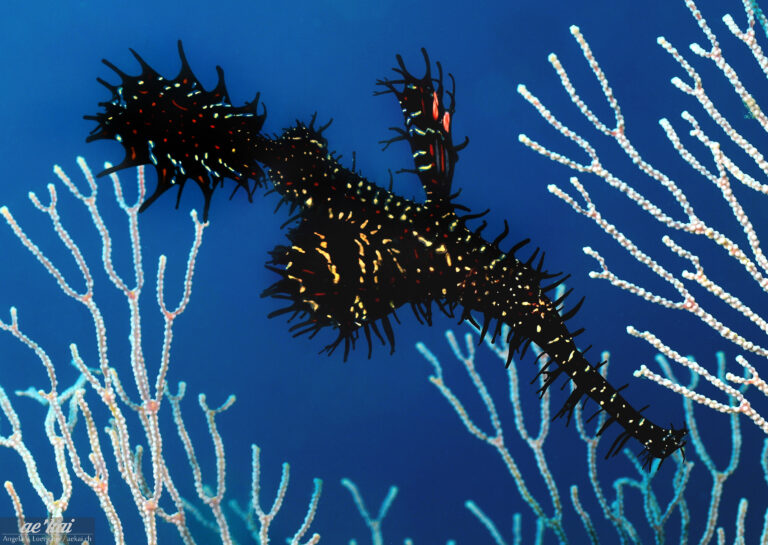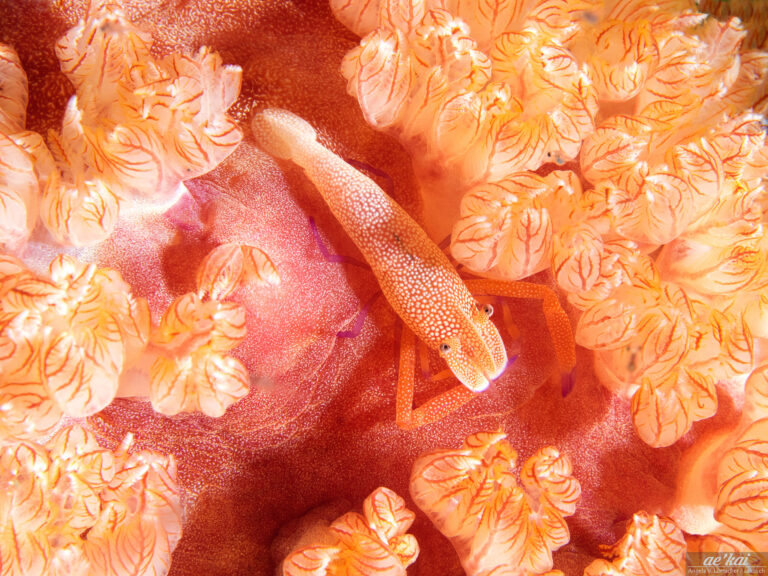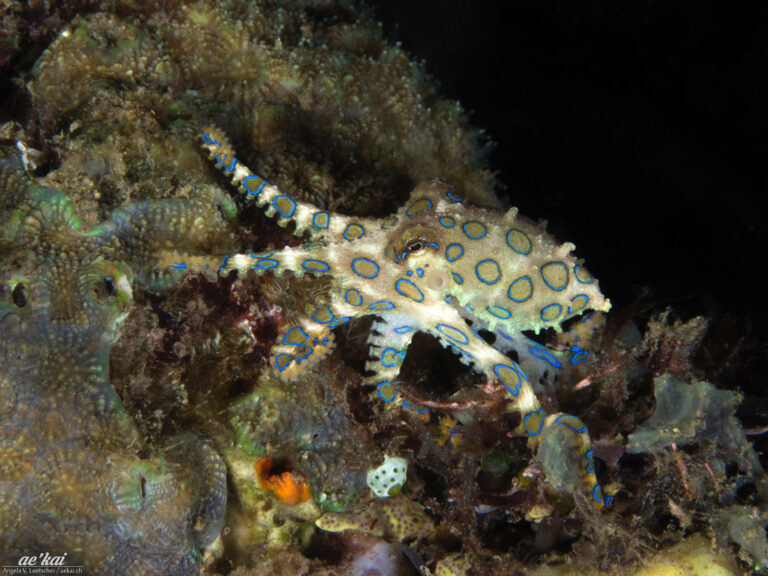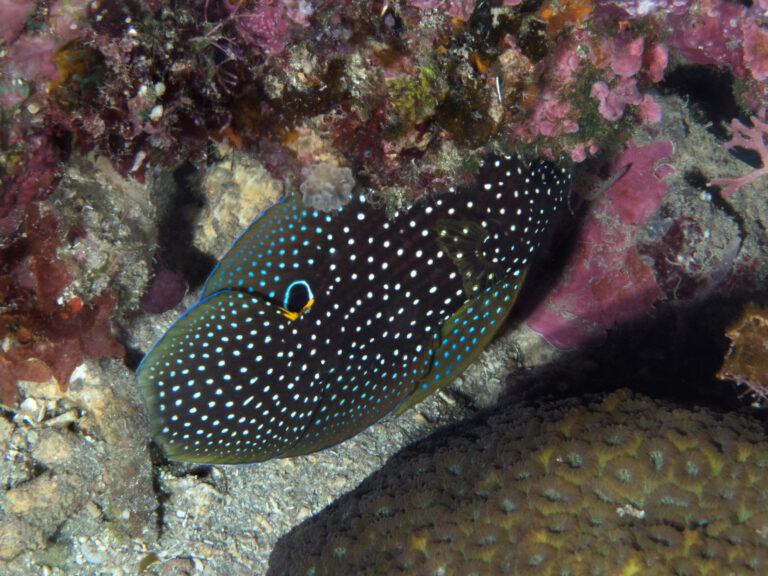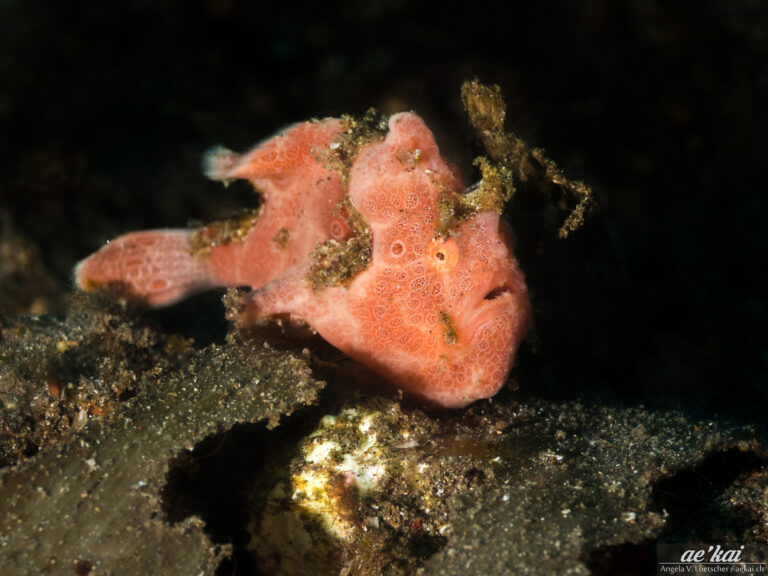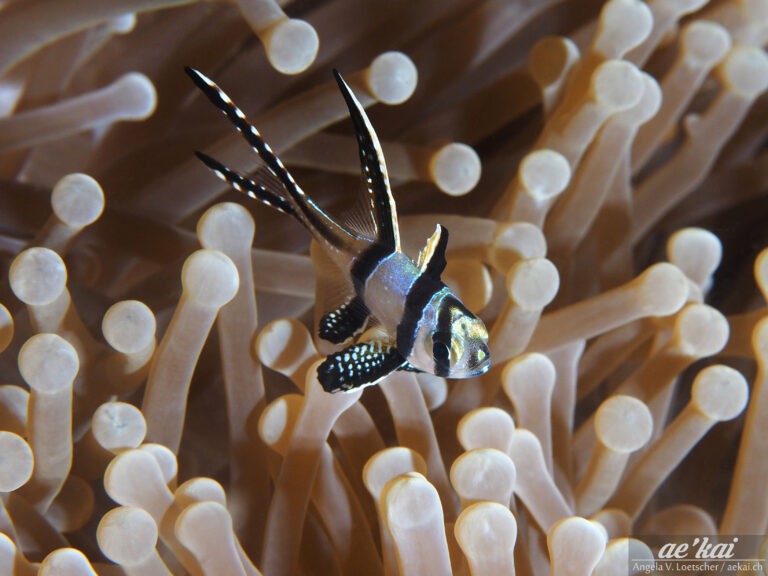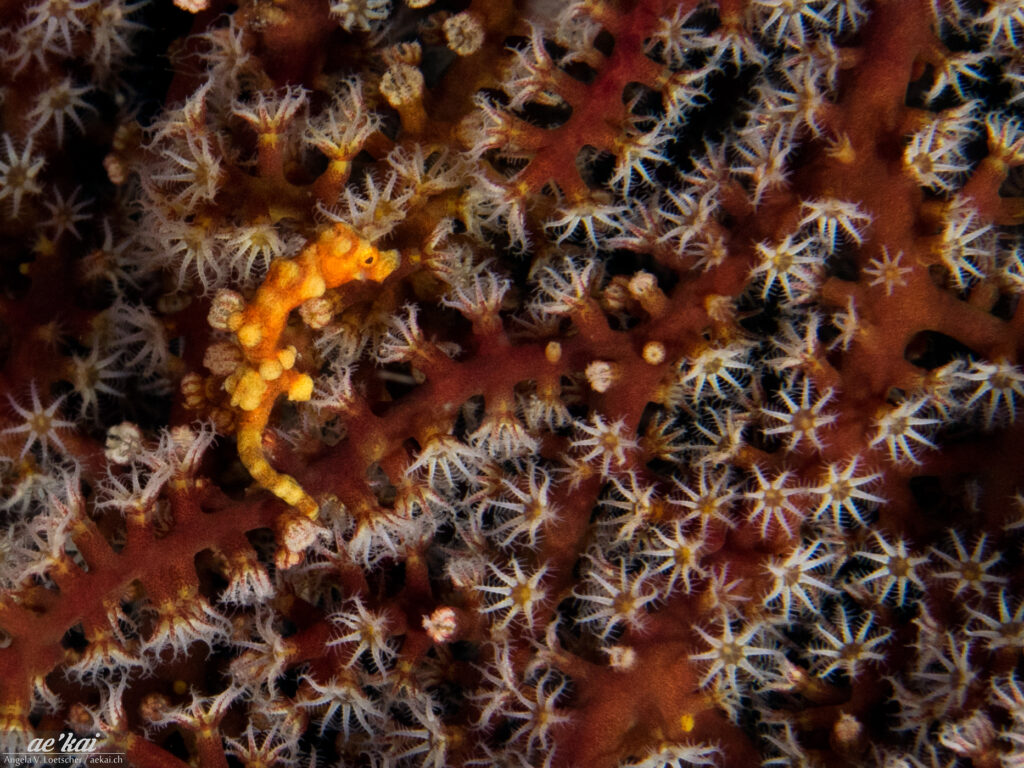
EN: Denise‘s Pygmy Seahorse
DE: Denise Zwerg-Seepferdchen
Family
Pipefishes, Pipehorses and
Seadragons (Syngnathidae)
Size
approx. 2.4 cm
Diet
Small crustaceans &
other zooplankton
Distribution
Western Pacific
The Denise Pygmy Seahorse (Hippocampus denise) is a pygmy seahorse and a member of the Pipefish family (Syngnathidae). It is one of the smallest known pygmy seahorses, with a maximum length of 2.4 cm (usually smaller).
Denise was discovered in Indonesia in 2001 by underwater photographer and Australian Museum Sydney employee Rudie H. Kuiter, but was initially thought to be a juvenile of the closely related Bargibanti Pygmy Seahorse (Hippocampus bargibanti). It was not until 2003 that Denise was recognized and described as a separate species after examination and various observations. The species was named after the underwater photographer Denise Nielsen-Tackett. Denise has since also been found in Vanatu, Palau, Malaysia, the Solomon Islands, southern Japan, northern Australia, and New Caledonia, suggesting that it may be distributed throughout the Western Pacific. However, it is still considered rare.
Its natural habitat are coral reefs, where the Pygmy Seahorses live on gorgonians of the species Annella reticulata, Muricella or Echinogorgia at depths up to 90 meters. They belong, like the other pygmy seahorses, to the best camouflaged underwater creatures and their dwarf size (even for a pygmy seahorse) doesn’t help in the finding them either.
Their bodies are usually in the light orange range and covered with not very pronounced tubercles, though less than those of the Bargibantis. They can camouflage themselves adaptively, i.e. they can adapt their color to that of the host gorgonian (usually these are in the color spectrum between yellowish and reddish). There is a reason why the tubercles are less pronounced: The host gorgonians on which Denise lives can completely retract their polyps and so Denise looks exactly the same and is perfectly camouflaged. Also unlike the Bargibantis, it has a very smooth skin. Its tail has slightly darker, barely visible rings. Some specimens may also be slightly darker in base coloration.
Like all pygmy seahorses, they can cling to the gorgonian branches with their tail, called a coiled tail, and they have the species-typical googly eyes and protruding, short snout. Males and females are easy to tell apart because females have very slender bodies, while males have a distinct little belly. As with all seahorses, it is the male and not the female that becomes pregnant and carries the brood.
By the way, the meaning of the name Denise is “Dionysus (Greek god of wine) following, wild, feverish/frenzied”. This fits the dwarf seahorse, due to its increased activity, because Denise is a real fidgeter compared to the Bargibanti dwarf seahorses. During the day you can easily observe how it not only hops around on its gorgonian, but also swims around it.
Unfortunately, not much is known about the reproductive cycle of the Denise. However, pregnant specimens have been found in February, May and October, which suggests that they reproduce throughout the year. Denise is one of the few animals that become sexually mature at a very small size of 1.3 cm. They usually live alone, but sometimes they can be found in pairs or small groups.
So far it is not known if this species is threatened with extinction, but the species has been mentioned in CITES (Convention on International Trade in Endangered Species of Wild Fauna and Flora) as a precautionary measure, so the trade for aquaristics is controlled to avoid endangerment.
Warning
Pygmy in general are very fragile and their natural behavior is easily disturbed. Therefore, no pygmy species or its gorgonian should ever be touched, as this has been shown to disrupt their behavior. Worst of all, however, is constant flash or strong lamplight, so the critters should not be exposed to too many photos or prolonged observation. Pygmies have been shown to go blind when exposed to too much flash. Unless the dive guide sets rules, each diver should be committed to taking no more than 5 photos per photographer per gorgonian (even if multiple pygmys are present). If possible, it should be even less. It is recommended not to check any of the photos on site for quality, because this way you can avoid the temptation to take "just one more" after the other. Experience shows that even with 2-3 calmly taken, deliberate photos, you will quickly have at least one that comes out well. However, no photo is worth damaging a pygmy

